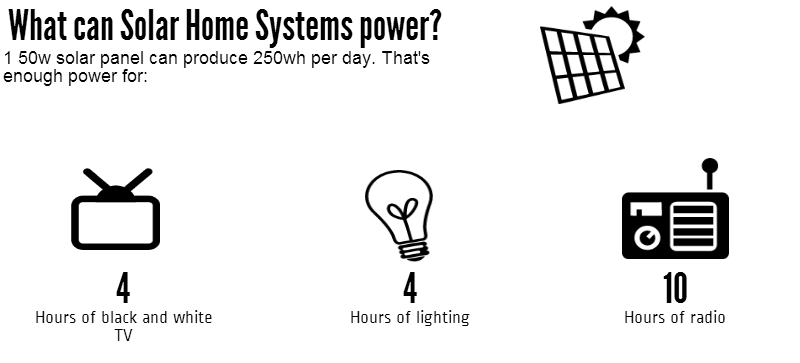Access to electricity is a basic need that cannot be unmet by service delivery inefficiencies. Fortunately, as the Department of Energy (DoE) states, 82% of households are connected to the energy grid, which is largely powered by Eskom. Despite the load-shedding problems associated with the giant electricity provider, government has largely fulfilled this requirement. Connect houses to the energy grid: check.
But what about the other 18 percent? The problem, according to the DoE, is not due to an energy shortage, but rather that households which are off the grid are so because they cannot be reached due to an unfavourable topography. In short, electricity runs through power lines, and where the landscape is unsuitable for the construction of power lines, electricity cannot be transported.
This would serve as a major obstacle in the department’s mandate to provide for the poorest of people, as most off-the-grid households are identified as rural dwellings. But this is not the only hurdle on the energy highway. While topography is a problem, rural electrification is uneconomical due to low income levels in rural areas resulting in low energy consumption rates. Connecting rural households to the energy grid would constitute wasteful expenditure, argues the department, as those households do not use that much electricity anyway. Moreover, rural areas are generally sparsely populated, which means that any electricity infrastructure would need to span long distances.
While the case for cost-effective expenditure holds merit, this does not mean rural households should be left in the dark. What then, has the DoE done to ensure that rural households are being powered?
Non-grid Solar Home Systems (SHS) have been identified as the ideal energy source by which to power rural households. Because it is non-grid, it can be installed on or near houses without the need for additional infrastructure development, which reduces costs yet provides that all important electricity. It must be noted, however, that SHSs will be rolled out as a temporary solution to the rural energy problem, with the department still in the process of formulating a long-term sustainable energy plan to connect rural households to the national energy grid. In the meantime, solar panels are capable of producing the following:

While rural residents can be assured of their recreation time, there are some glaring absentees from the list. SHSs do not provide enough energy for basic day-to-day tasks such as cooking, heating, and refrigerating. Residents would have to rely on traditional options such as firewood and paraffin, prompting the question: what other sources can be harnessed to meet the basic energy needs of rural homes?
One route the department has taken is to partner with private sector companies to provide thermal fuels, that is, fuels for heating purposes, to rural households. Currently, there are agreements with six companies for the provision of thermal fuels in KwaZulu-Natal, Limpopo, and the Eastern Cape. The contract sees the department pay a once-off connection fee as determined by the energy provider, saving households any incurred costs. It is also the responsibility of the department to make sure that the electricity is affordable, and ensure that energy providers regularly attend to the maintenance of their services. This system has been in operation since 2001.
Another possible energy route would be the implementation of fuel cell generation to power rural households. While fuel cell technology has never been tested for the electrification of rural areas, it is capable of powering homes without the building of any infrastructure, as well as creating jobs in the high-tech manufacturing sector. As of yet, the economics around the viability of fuel cell electrification for rural housing is unclear, with the department likely to conduct further research into the production capacity and suitability of fuel cell technology, before giving it the green light.
In preparation for the future, the DoE will conduct pilot projects to assist with the formulation of a long-term sustainable energy plan for off-the-grid households. One project will be in a rural settlement in the Nelson Mandela Metro Municipality, with the aim of finding solutions to lighting those houses with SHSs. In addition, an Anglo Platinum-sponsored fuel cell generation pilot has been implemented in Moqhaka Municipality in the Free State to test its electrification capabilities. Such pilot projects are likely to continue before a concrete long-term energy plan for off-the-grid housing is implemented.


Comments
Keep comments free of racism, sexism, homophobia and abusive language. People's Assembly reserves the right to delete and edit comments
(For newest comments first please choose 'Newest' from the 'Sort by' dropdown below.)